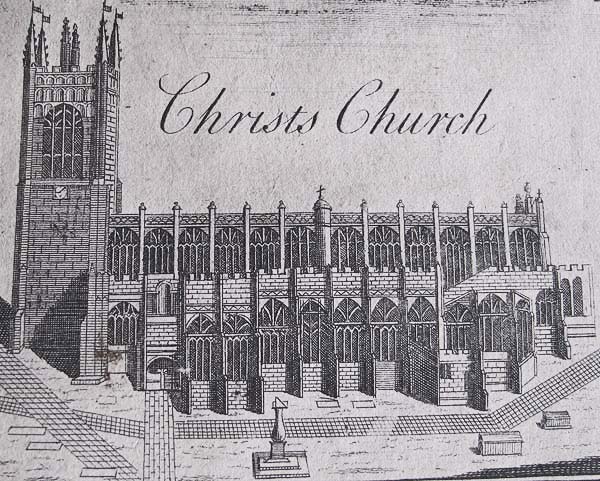|
Manchester
Cathedral
The Domesday Book records that in 1086 Manchester had a Parish Church. It is believed that it was located at the corner of St Mary's Gate and Exchange Street. In 1215 Lord of the Manor, Robert Greslet, built a church next to his manor house on a sandstone promentary between the Rivers Irwell and Irk and surrounded by a ditch known as the Hanging Ditch. His manor house became the present Chetham's Hospital and Library and the church became the present Cathedral. In 1421 the church became a Collegiate Foundation
dedicated to St Mary, St Denys and St George. In
1398 Thomas de la Warre became the Baron of the Manor
of Manchester.
A view of the church from the Casson map of 1741 On his death he left £3,000 to be used on the
buildings of his collegiate foundation. Most of this
was spent on converting the Baron's Hall into the
house-of-residence for the College Priests or Fellows.
In 1847 The Diocese of Manchester was created and the church became the Cathedral church. In 1864 the tower was in a dangerous condition and had to be demolished. In 1868 a new tower was formally opened.
It was an exact replica of the original but six feet
higher. A new North Porch was added in 1889 to replace
the original medieval one.
In 1940 a German bomb destroyed most of the northeast of the Cathedral and caused extensive damage to the rest of the building. The damage was so severe that there were thoughts that it could not be repaired. In the end the reconstruction took 20 years to complete. |
        The quire stalls have a hinged seat
arrangement known as a 'misericord'. In simple terms
they provided a ledge for the clergy to perch on during
long services. It is the carvings on the misericords
that makes them special. These are considered to be
among the finest in Europe. They depict medieval tales
and legends.
  |





